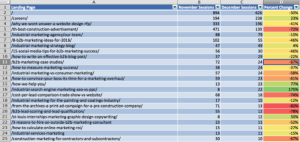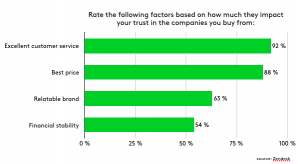— May 30, 2019
From tightening payment terms to making it easier for customers to pay you, follow these five simple steps to speed up payment and protect your positive cash flow.
Cash flow is the lifeblood of any small business, as you no doubt are well aware. How else are you going to cover expenses, pay employees and keep things running — not to mention qualify for financing when you need it? Needless to say, overdue payments can put a serious kink in your cash flow.
More than 80 percent of small business invoices in America are over 30 days past due. Not only that, the average small business is buried under more than $ 80,000 of unpaid invoices. And while late payments can cripple a small business, there are several steps you can take to bypass this common problem.
Getting paid in a timely, reliable manner is one of the best ways to bolster your cash flow. We know what you’re thinking: easier said than done. Follow these five simple strategies to get paid faster in order to maintain a positive cash flow.
- Invoice Immediately
Waiting until the end of the month to send invoices can cause significant payment delays. Cut down the time it takes to get paid by invoicing immediately after delivering your goods or services.
Are you still sending out paper invoices? It’s time to consider electronic invoicing. While emailing PDF invoices is a step in the right direction, there are myriad benefits of a more sophisticated online invoicing system, the first of which is immediate delivery of your invoices.
Electronic invoicing also lets your customers know that they’re dealing with a professional; you’re not likely to forget about an invoice, much less let it slide past the due date.
- Shorten Your Payment Terms
Are you giving your customers too much time to pay you? As tempting as it may be to offer favorable terms in order to close a deal, consider the strain on your cash flow if you offer 60- or even 90-day payment terms.
If you maintain a good relationship with your customers, 30 days should be sufficient. Just make sure to define your payment terms up front, and in writing.
- Provide Incentives
Incentivizing early or on-time payments can help you avoid the hassle (and headache) of tracking down late payments. The incentive is up to you, and could be anything from a small discount (0 to 5 percent) to non-cash rewards that are specific to your business.
You may also want to establish penalties or interest for late payments. Always consider the value of the client relationship before enforcing penalties. A first-time warning or flexibility for extenuating circumstances will go a long way to strengthen that all-important client relationship.
- Offer Flexible Payment Options
Put yourself in your customers’ shoes. How would you prefer to pay: Write a check and send it through snail mail, or pay the invoice online with one quick click? Make it as easy as possible for clients to pay you, and you’ll get your funds much faster.
Offering your customers more ways to pay is another simple way to speed up payments. Clients will appreciate the ability to pay with a credit card, via bank draft (ACH) or PayPal.
- Automate with Invoicing Software
Intuitive invoicing software can simplify all of the above, streamline your invoicing process and make it much easier to get paid faster. These online tools are a win-win for both you and your clients. Not only does the software make it simple to send invoices immediately, it makes it easier for your customers to pay you.
Forget about endless reminders and uncomfortable phone calls about past-due invoices. Online tools allow you to set up alerts to automatically remind customers when payments are due, or past due. Better yet, you can set a recurring invoice schedule and even activate auto payments, which are the gold standard for getting paid on time, every time.
When it comes to shoring up your cash flow, these minor efforts can pay enormous dividends. Once your invoicing system is set up to help you get paid faster, you can begin to rely on consistent cash flow that keeps your business in the positive.
This article was originally published on the author’s business financing blog and was reprinted with permission.
Business & Finance Articles on Business 2 Community
(39)
Report Post






